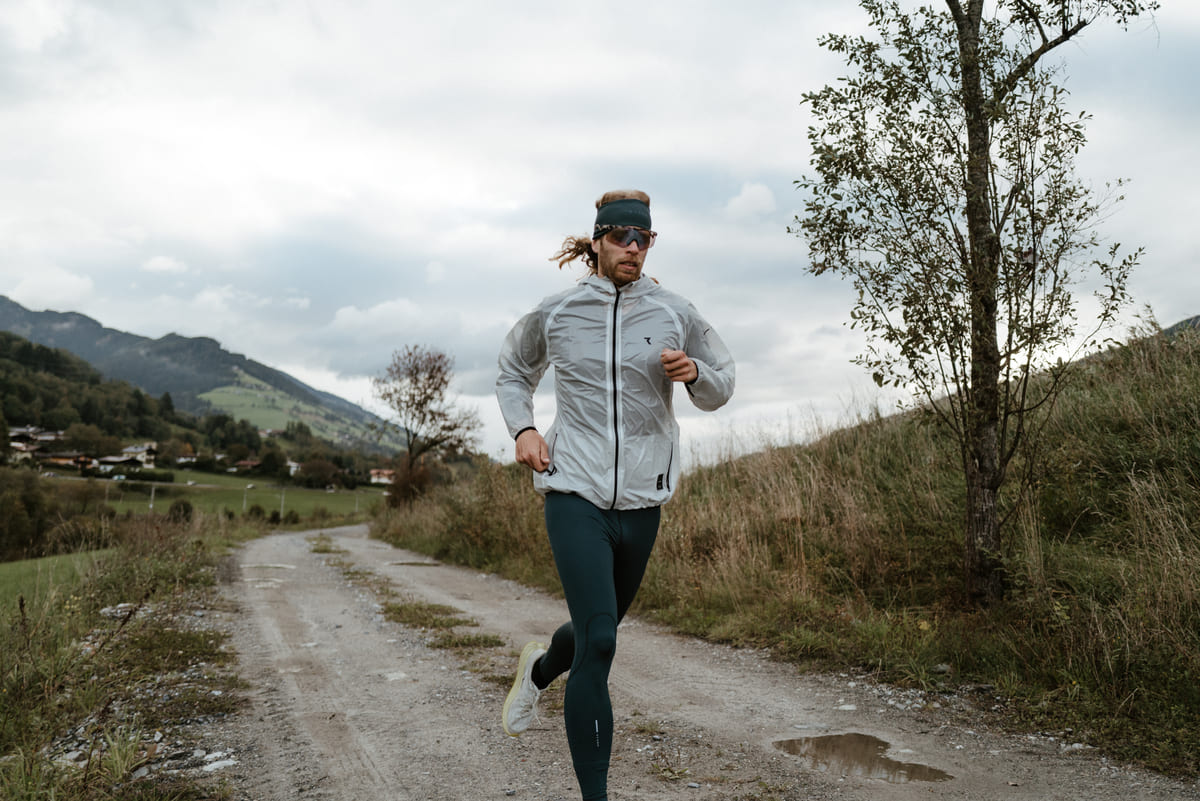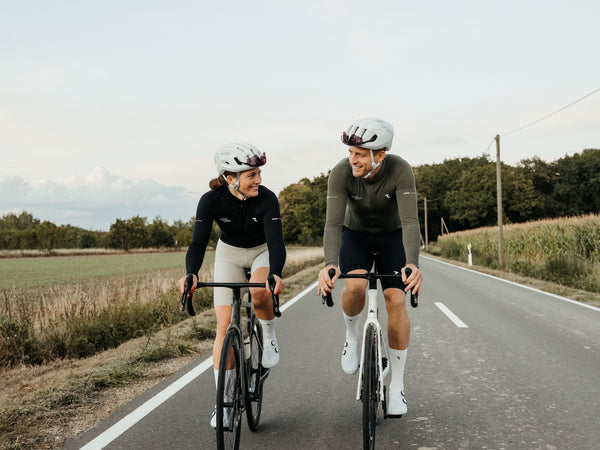We are athletes. At home out there - in any weather. With a good rain jacket for running or cycling, we are well protected from the weather even on wet days and can focus fully on our units.
In this guide we explain in detail what makes a good rain jacket and give you information to find your perfect rain jacket for running or cycling.
What makes a good rain jacket?
There is no general answer to this question. Depending on the area of use, there are different requirements for a rain jacket. Basically, however, the following applies: a good rain jacket as the outermost layer in layering should keep out wind and rain and be abrasion-resistant. At the same time, a jacket that is worn for sports must of course be as breathable as possible . A low weight and a small pack size are particularly advantageous in changeable conditions, as the jacket can be stowed away more easily when not in use. Anyone who is often out and about in the dark and values good visibility should pay attention to reflective elements on the rain jacket when buying it.

Water-repellent or waterproof? The water column gives it away.
The so-called water column provides information on whether a rain jacket can be described as water-repellent or waterproof. It is given in millimeters and tells you how much water the rain jacket can withstand before the moisture penetrates through the material.
The higher the water column, the more waterproof the material. In general, it can be said that a rain jacket can be described as waterproof from a value of 5,000 mm. Anything below that means the jacket is water repellent . In Germany, the standard value is even much lower, so that the material only has to withstand a water column of 1,300 mm in order to be called waterproof.
How reliably the jacket as a whole really keeps the rain off depends on other factors, for example:
- processing of the seams
- Number of layers processed
- general processing of the material
How is the water column measured?
To measure the water column, a piece of the fabric is clamped into a holder. A cylinder is then placed on it, which is gradually filled with water. The water level rises by ten millimeters per second. This results in an increase in water pressure on the material to be tested. The maximum value is reached when the material is soaked and three drops have formed and penetrated the fabric.
When it comes to the waterproofness of a garment, not only the amount of water plays a role, but also:
- the type of water exposure
- the duration of the impact
- the pressure of the water on the fabric - for example from the wind, a backpack or the person carrying it
All of this should also be considered when purchasing.
Waterproof, windproof and breathable at the same time - is that possible?
A particular challenge in the development of rain jackets is finding the right balance between weather protection and breathability . As soon as a rain jacket has a membrane, the fabric is waterproof and windproof. At the same time, the membrane also restricts the breathability of the jacket. There are now technical solutions that increase breathability compared to conventional membrane rain jackets. These are also used in RYZON's membrane rain jackets, so that a permeability of 20,000 g/m2/24h is achieved according to the B1 method .
Rain jackets without a membrane generally have higher breathability than rain jackets with a membrane. If your rain jacket should only protect you from occasional showers , a water-repellent rain jacket without a membrane is the right choice. For example, discover our Phantom LightShell Jacket .

What kind of rain jacket do I need?
Before you decide on a rain jacket, you should ask yourself in which situations and under what conditions you primarily want to use it. Which function should be in the foreground?
Should the rain jacket be completely waterproof and be able to withstand heavy continuous rain ? Or is it enough if it protects you from wind and short showers and is very light, breathable and easy to stow away? Does she have to warm you up? Is visibility in the dark important to you?
You should clarify all these questions for yourself in order to be able to make an informed decision.

Find your RYZON jacket for cycling or running in the rain
Area of use: Moderate temperatures / wind / occasional rain - eg in the transitional seasons
- In focus: wind protection, low weight and high breathability
- Rain protection: The materials we choose have a water-repellent coating and can withstand a drizzle or brief showers. They are not suitable for use in continuous rain.
- Materials: robust and particularly abrasion-resistant nylon fabric
- RYZON products
- In focus: retention of body heat and high breathability
- Rain protection: The materials we choose have a water-repellent coating and can withstand a drizzle or brief showers. They are not suitable for use in continuous rain.
- Materials: abrasion-resistant nylon fabric with elastane content for freedom of movement
- Products:
- Generator thermal bike jacket
- Signature Thermal Bike Jacket
- Fusion MerinoShell Performance Jacket (no water-repellent coating)
Area of application: wind and continuous rain
- In focus: Wind and rain protection with the lowest possible weight and small pack size
- Rain protection: Processing of a PU membrane in the 3-layer outer fabric, which is waterproof and windproof and as breathable as technically possible
- Fabrics: robust and particularly abrasion-resistant fabrics
- Products:
- Sydon Athletic Rain Jacket for women (20,000 mm water column)
- Sydon Athletic Rain Jacket for men (20,000 mm water column)
Discover all our rain jackets for running and cycling:

